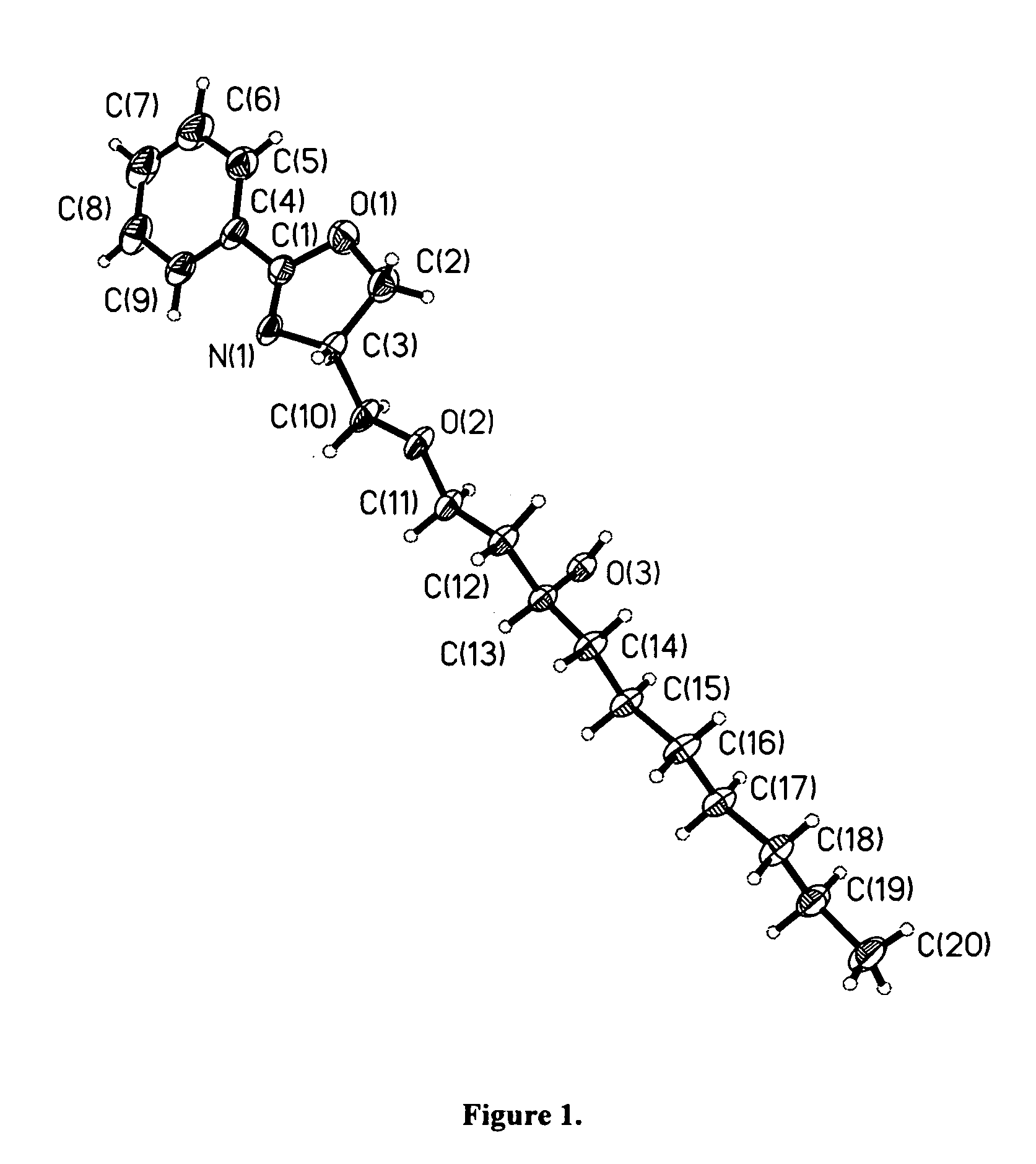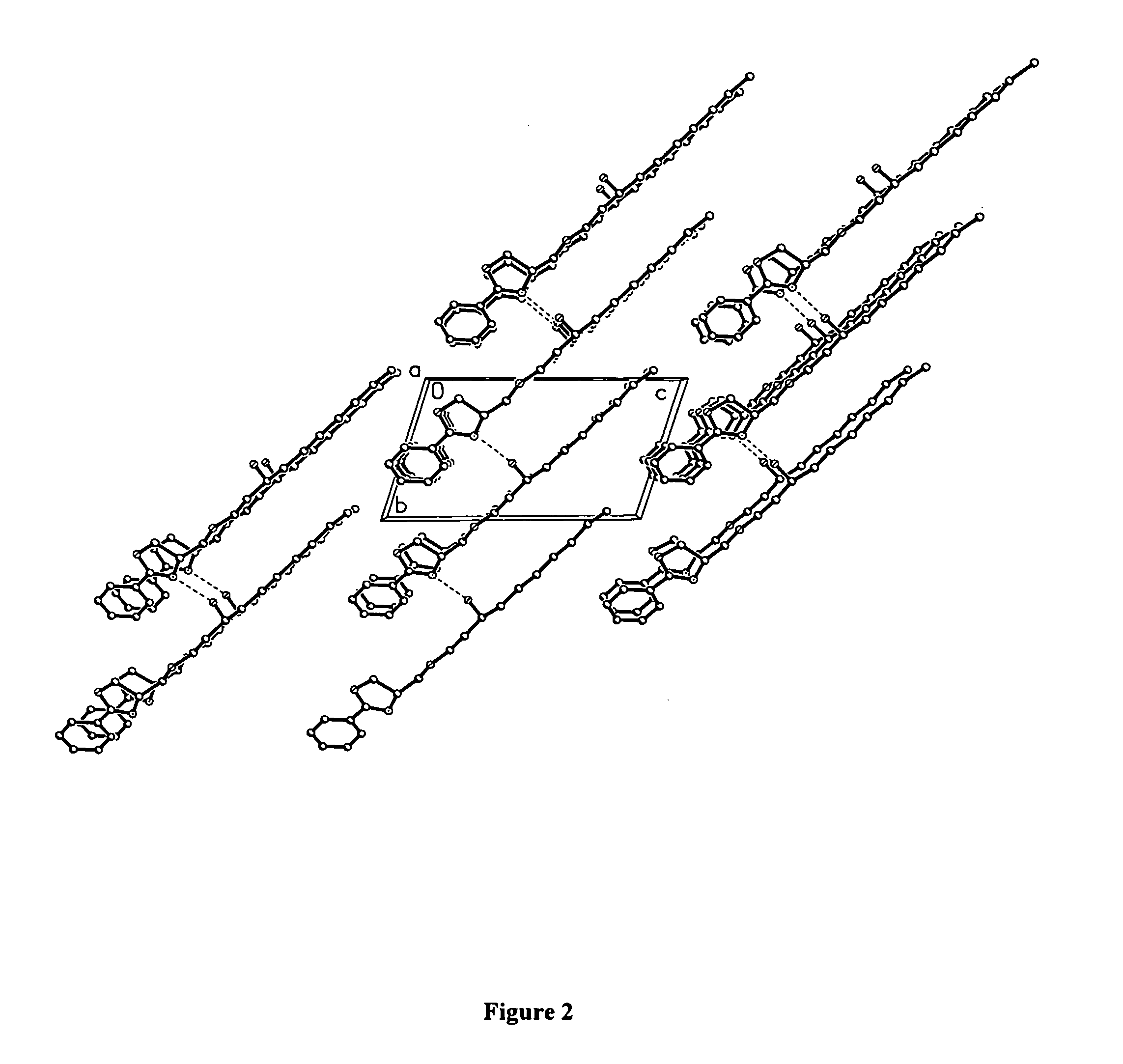Compounds for preparing immunological adjuvant
a technology of immunological adjuvants and compounds, which is applied in the field of compounds for preparing immunological adjuvants, can solve the problems of inability to use freund's adjuvant in humans, inability to elicit a sufficient antibody response to confer immunity, and peptide and carbohydrate antigens
- Summary
- Abstract
- Description
- Claims
- Application Information
AI Technical Summary
Benefits of technology
Problems solved by technology
Method used
Image
Examples
example 1
Preparation of ER-028695
[0150]
[0151] Preparation 1: To a stirred solution of p-toluenesulfonyl chloride (1704 g, 8.938 mol) in dry tetrahydrofuran (THF) (2408 g) in a dry 22-L reactor under a nitrogen atmosphere at 0° C. was added ER-028694 (952 g, 5.46 mol) in dry THF (1041 g) over a 9-minute period. The residual ER-028694 was rinsed with anhydrous THF (364 g) into the reactor. Triethylamine (1.35 Kg, 13.4 mol) was added drop wise to the clear yellow reaction solution over a 19-minute period during which time the solution turned cloudy. The residual triethylamine was rinsed with dry THF (30 g) into the reaction mixture.
[0152] After stirring for an additional 15 hours 17 minutes at 0° C., the reaction was quenched with a slow addition of 1.0 M of hydrochloric acid (2120 g) over a 36-minute period with a temperature change from 0.1 to 5.9° C. Brine (785 mL) was added over a 3-minute period, stirring continued for an additional 5 minutes followed by transferring the reaction mixture...
example 2
Preparation of ER-806158
[0156]
[0157] Preparation 1: To a stirred solution of ER-807277 (1.177 Kg, 6.642 mol) in dry THF (10.580 Kg) in a dry 22-L reactor under a nitrogen atmosphere at −1° C. was added 1.0 M sodium bis(trimethyldisilyl)amide in THF (3.300 Kg) over a 33-minute period while keeping the reaction temperature between −0.8-4.1° C. After stirring the solution for an additional 17 minutes at −0.1° C., crude ER-028695 (1.089 Kg, 3.316 mol) in dry THF (0.968 Kg) was added to the reaction solution over a 5-minute period maintaining the temperature between −0.1-3.9° C. The residual ER-028695 was rinsed into the reactor with dry THF (0.253 Kg). The final reaction mixture was warmed to room temperature during which time the orange clear reaction solution turned into a suspension (approx. at 19° C.). After stirring for 3 hours 31 minutes at room temperature, the completed reaction mixture was cooled to 0.1° C. and poured into a mixture of cold saturated aqueous NH4Cl (4.7 Kg) and...
example 3
Preparation of ER-819059
[0172]
[0173] Preparation 1: To a stirred solution of N-(3-dimethylaminopropyl)-N′-ethylcarbodiimide hydrochloride (904 g, 4.176 mol), lauric acid (purified, 881 g, 4.398 mol), and ER-806158 (1400 g, 4.198 mol) in dry dichloromethane (CH2Cl2) (3710 g) in a clean dry 22-L flask under a nitrogen atmosphere was added 4-dimethylaminopyridine (51 g, 0.417 mol). After stirring for 1 hour 13 minutes, the reaction mixture turned into a slightly cloudy yellow solution and the reaction temperature reached a maximum of 26.7° C. After 6 h 34 minutes the reaction was found to be 98.9% complete, at which time additional N-(3-dimethylaminopropyl)-N′-ethylcarbodiimide hydrochloride (303 g, 1.581 mol) was added in one portion. After stirring for a total of 20 hours 50 minutes at room temperature, MeOH (5566 g) was added in one portion to the yellow reaction suspension (slightly endothermic, Tmin=17.1° C.). Partial solvent evaporation (house vacuum, 29-32° C.) to remove the CH...
PUM
| Property | Measurement | Unit |
|---|---|---|
| Volume | aaaaa | aaaaa |
| Volume | aaaaa | aaaaa |
| Fraction | aaaaa | aaaaa |
Abstract
Description
Claims
Application Information
 Login to View More
Login to View More - Generate Ideas
- Intellectual Property
- Life Sciences
- Materials
- Tech Scout
- Unparalleled Data Quality
- Higher Quality Content
- 60% Fewer Hallucinations
Browse by: Latest US Patents, China's latest patents, Technical Efficacy Thesaurus, Application Domain, Technology Topic, Popular Technical Reports.
© 2025 PatSnap. All rights reserved.Legal|Privacy policy|Modern Slavery Act Transparency Statement|Sitemap|About US| Contact US: help@patsnap.com



